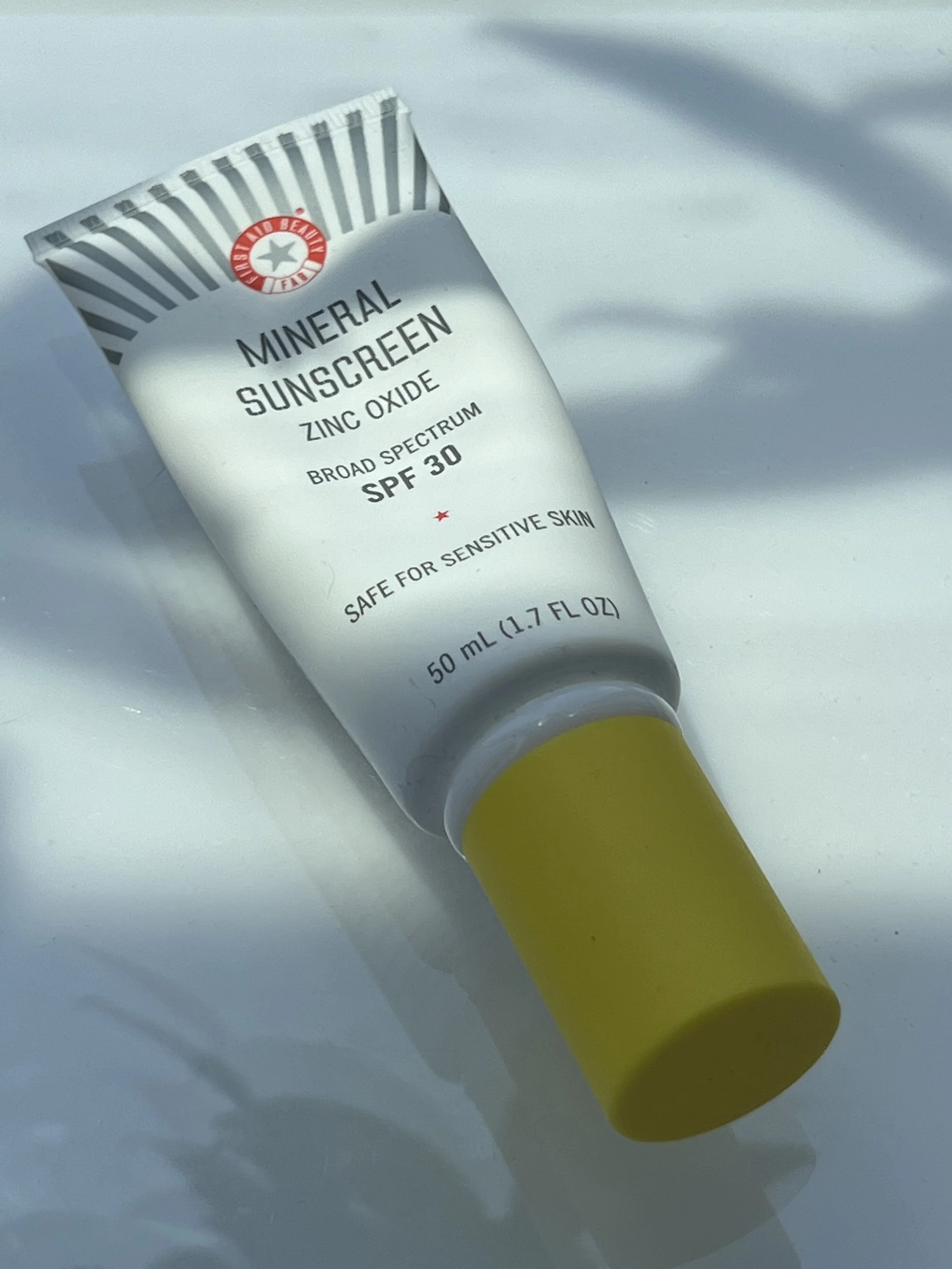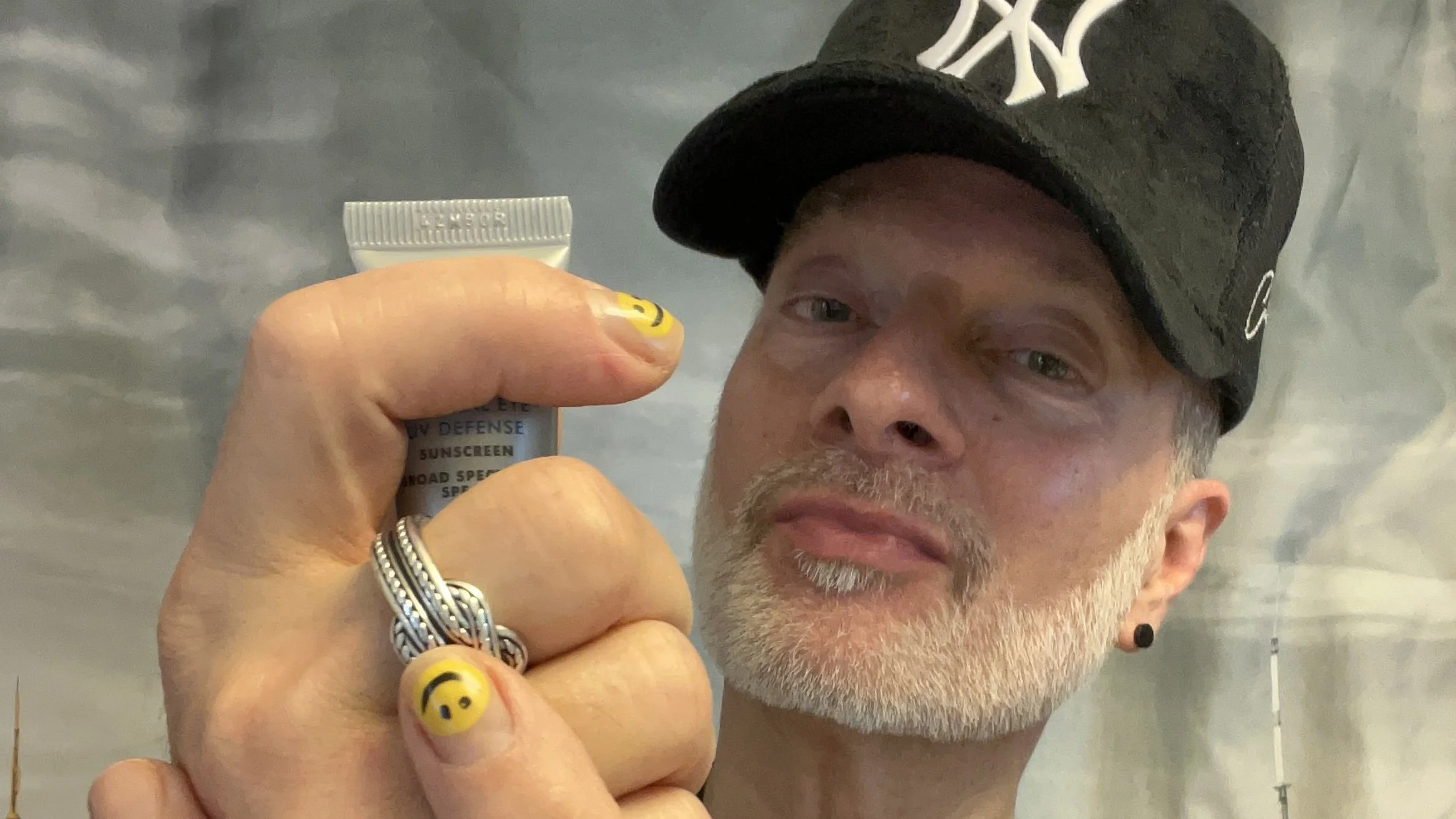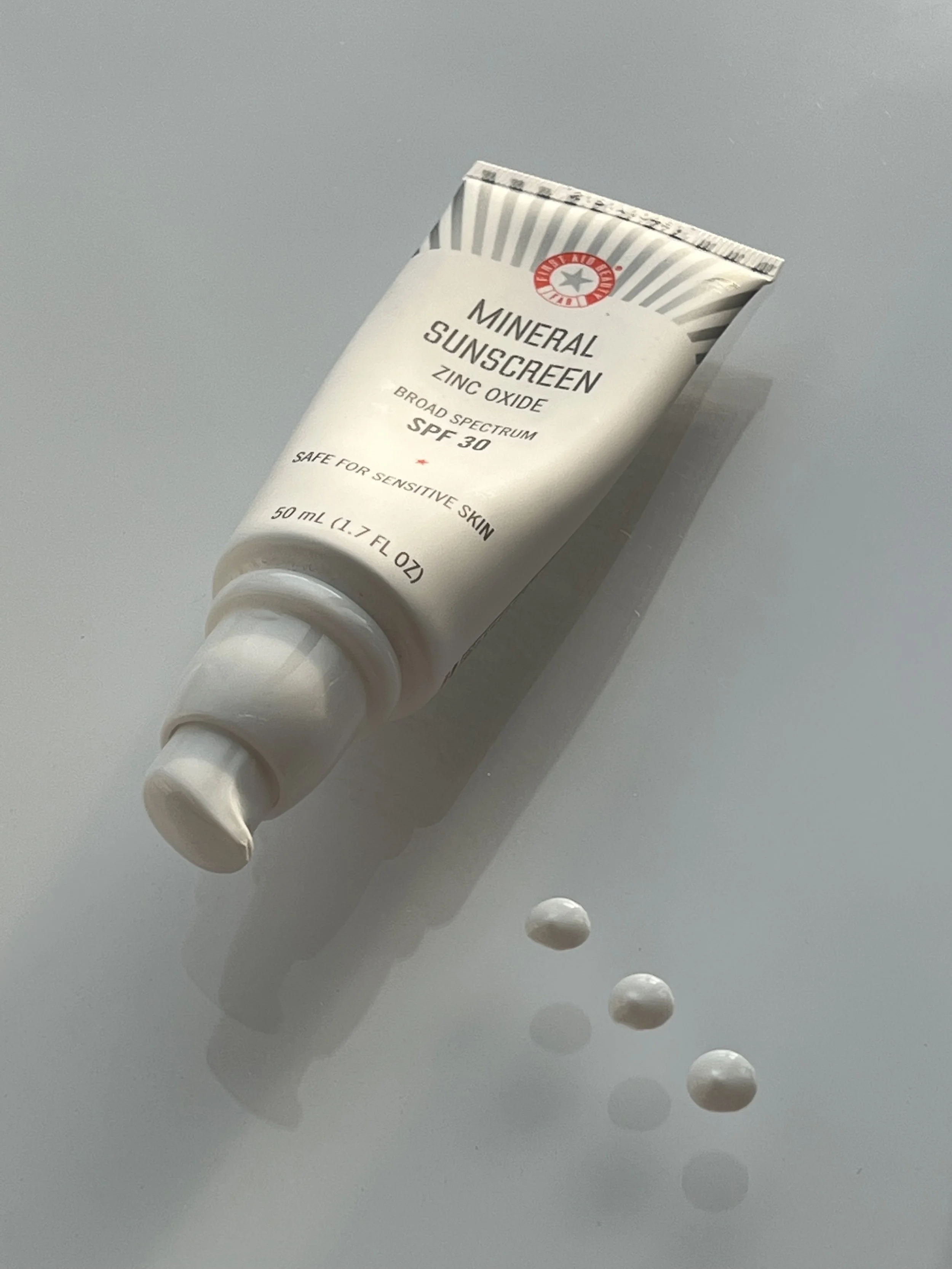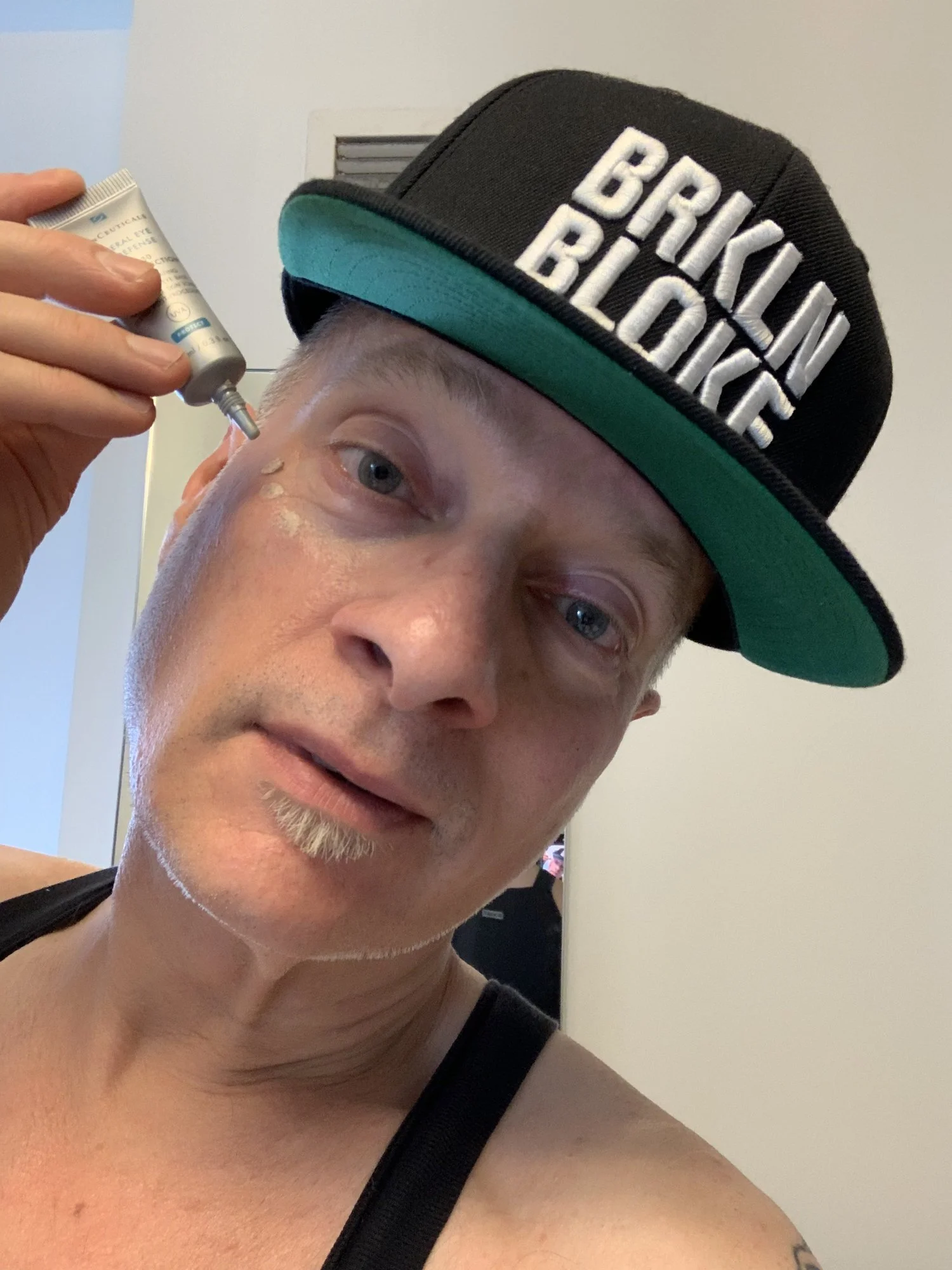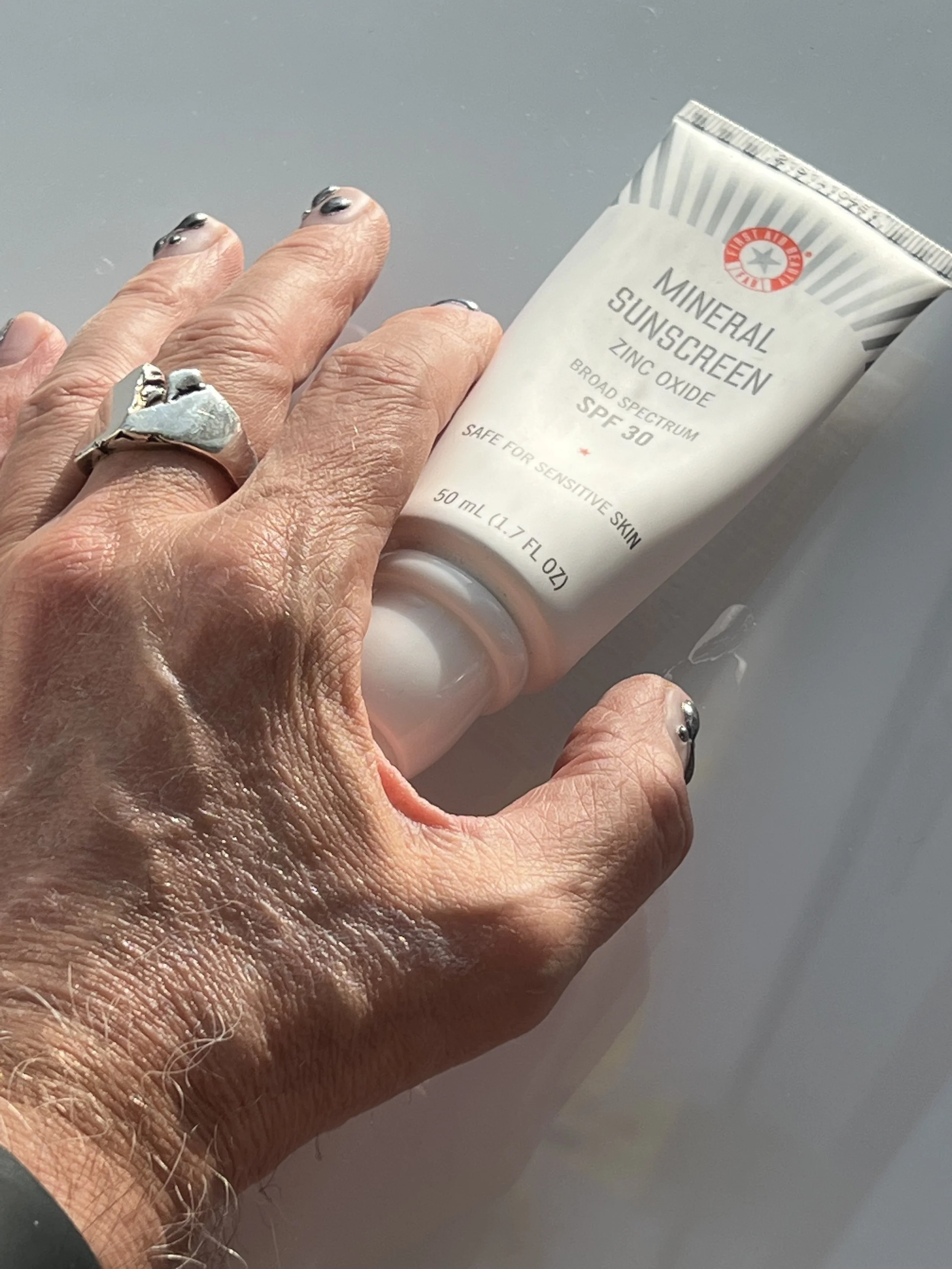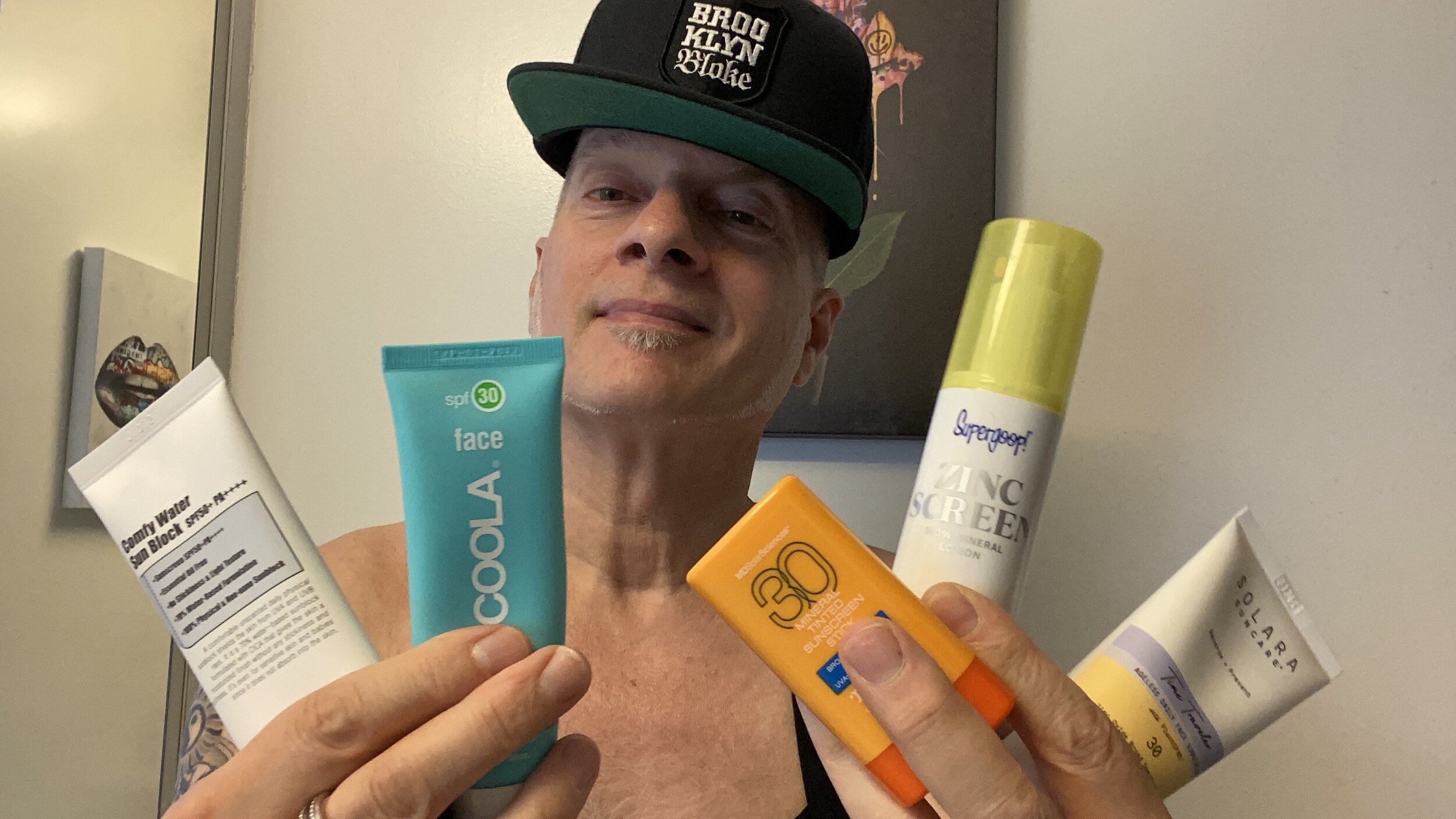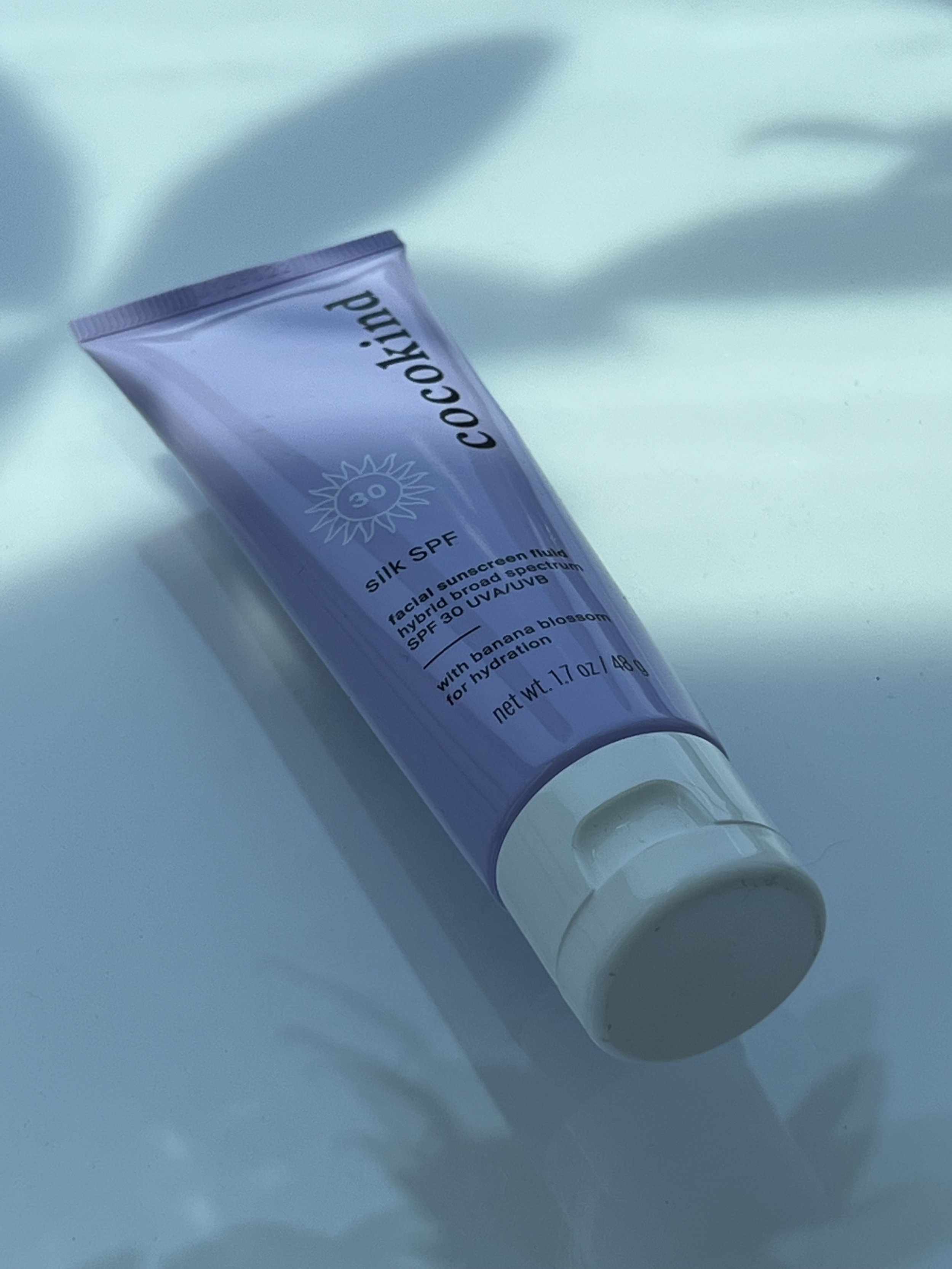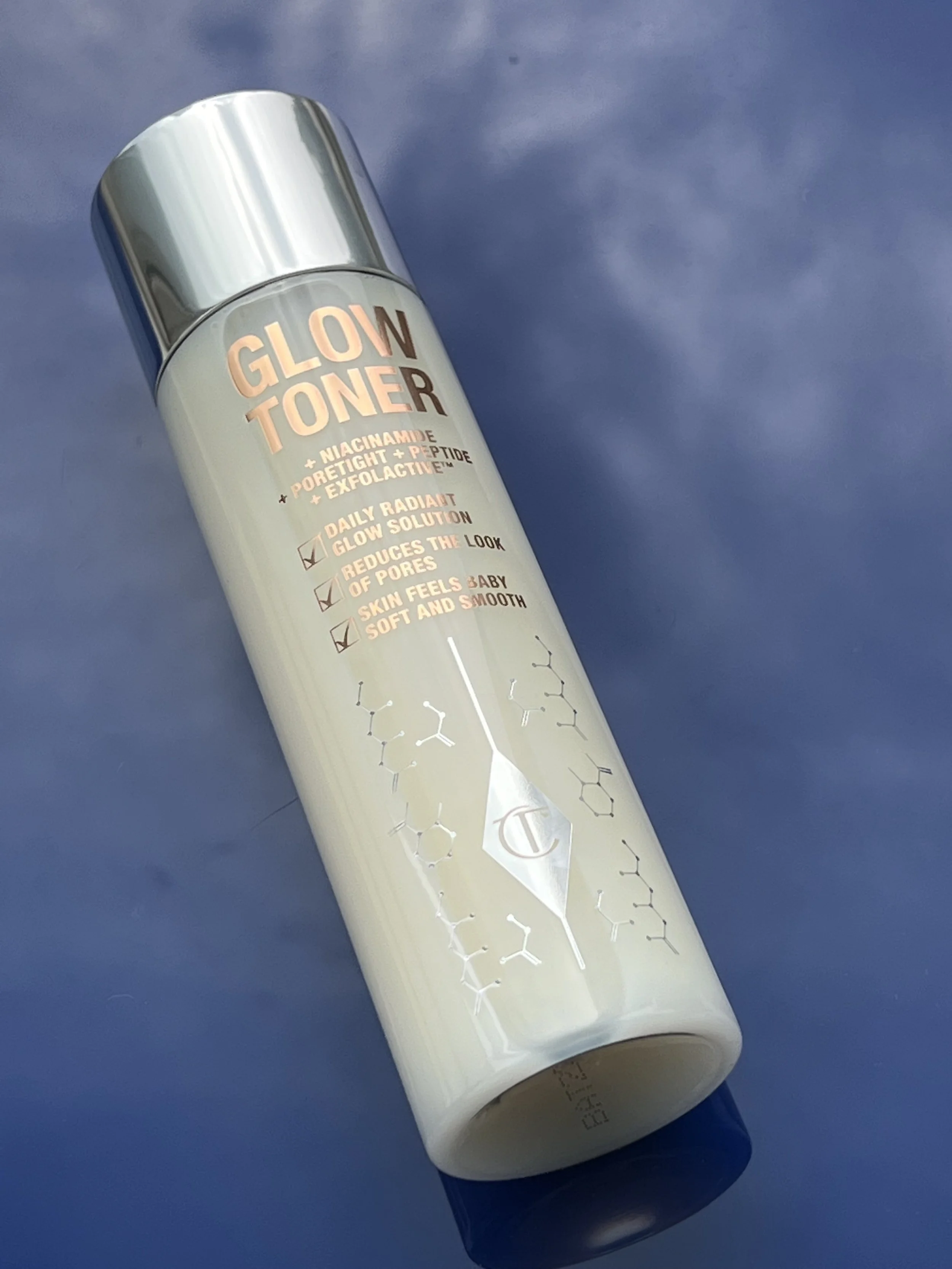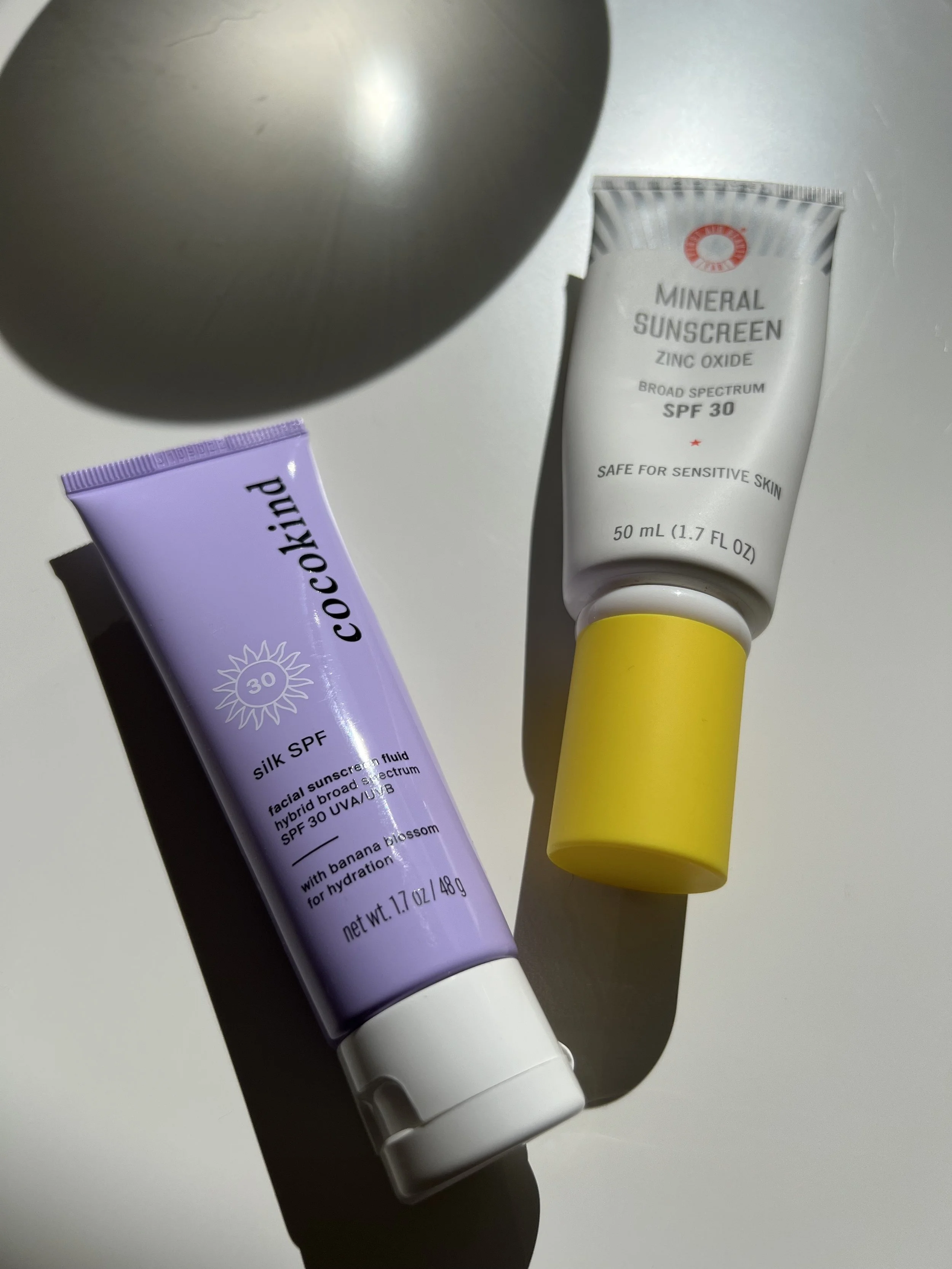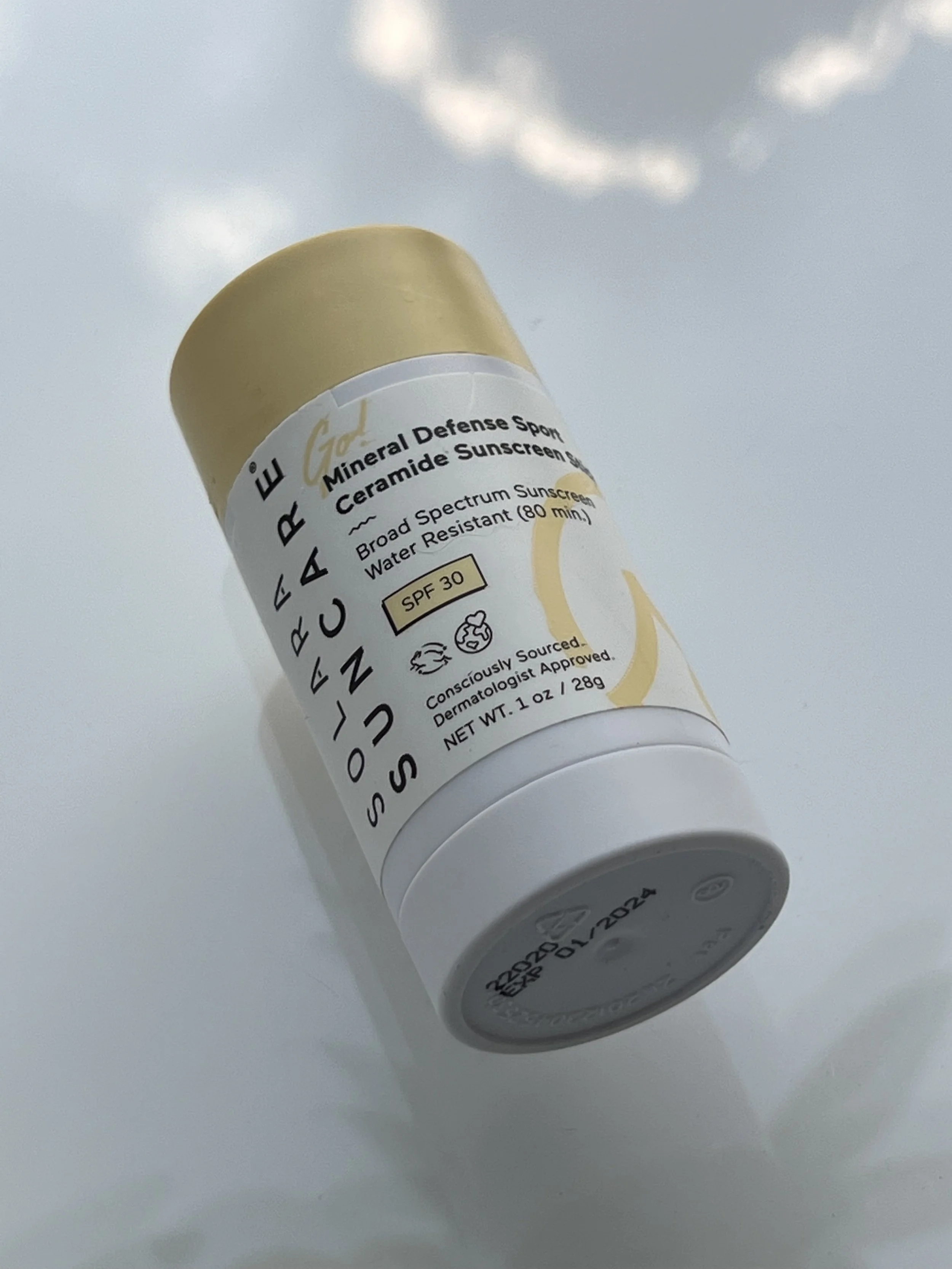PRODUCT REVIEW: FIRST AID BEAUTY MINERAL SUNSCREEN - BEST LIGHTWEIGHT SUNSCREENS, BEST MINERAL SUNSCREEN WITH NO WHITE CAST
FIRST AID BEAUTY | MINERAL SUNSCREEN
This review was originally part of my blog article titled, New Summer Sunscreens I Can’t Put Down! You can still catch the full piece here.
—
I’ve been a big fan of First Aid Beauty for quite a while now. I’ve reviewed numerous First Aid Beauty facial skincare products on the blog over the years and have come to appreciate the brand for its range of some the best cleansers, serums and face creams for sensitive skin.
The brand’s moisturizers for sensitive skin run the full gamut with face creams for very oily skin to very dry skin — and all skin types in between. And since we’re dead smack in the middle of summer here in New York, I’m reminded of just how much I enjoyed First Aid Beauty’s Ultra Repair Oil-Control Moisturizer last year.
As I said about the Ultra Repair Oil-Control in my product review on the blog, the clean, oil-free formula is as light as air and feels virtually weightless on the skin — something I know people with oily skin can appreciate. Controlling surface oils is the main benefit of the Ultra Repair Oil-Control formula.
PRODUCT REVIEW: FIRST AID BEAUTY ULTRA REPAIR OIL-CONTROL MOISTURIZER – BEST FACE CREAM FOR OILY SKIN
FAB achieves the mattifying effect with a blend of mineral powders that absorb excess sebum on the surface of the skin, leaving a perfectly matte, natural-looking complexion. If you’re longing for a really great moisturizer for oily, sensitive skin, Ultra Repair Oil-Control is it.
About two years ago, the brand offered a wonderful tinted sunscreen fluid called Weightless Liquid Mineral SPF 30. Curiously, the product just vanished and I never understood why. I loved the stuff. I suspect it was too expensive at $34 for 1.5 oz. Or maybe it didn’t play well with makeup.
But it’s all good! First Aid Beauty, the brand with the best skincare for sensitive skin, just introduced an even better formulation in what has quickly become one of my favorite sunscreens ever. First Aid Beauty’s Mineral Sunscreen Zinc Oxide Broad Spectrum SPF 30 has a relatively sheer texture that blends quickly into my fairly light skin.
The Most Important Product You're (Probably) Not Using!
What’s the Difference Between Mineral and Chemical Sunscreens?
While I prefer a mineral sunscreen, it’s not a dealbreaker for me. What’s most important is that you love using your facial sunscreen product. If you love using a chemical sunscreen, that’s perfectly okay. One of my all-time favorite daily sunscreens for face is the Supergoop! Daily Dose Vitamin C + SPF 40 Sunscreen Serum PA+++ — a 100% chemical facial sunscreen that’s such a pleasure to use. As crazy as it sounds, I look forward to applying it! (You can catch my review of Daily Dose on the blog here.)
What’s the difference between a mineral sunscreen and a chemical sunscreen – and is a mineral sunscreen better than a chemical sunscreen?
For helpful insights, there’s an excellent article by the experts on the Paula’s Choice Research Team titled, Mineral vs. Synthetic Sunscreen Ingredients. (It’s available here.) In the piece, the experts explain the differences and benefits between the two — and even dispel a myth or two.
The two types of sunscreen ingredients are mineral and synthetic [chemical], and both are equally protective. Further reassuring is that each can be included in formulas created for every skin type. For example, if you have normal to oily skin, there are weightless, non-greasy options; if you have normal to dry skin, it’s possible to find skin-smoothing, hydrating SPF products.
What’s the Difference Between Mineral and Synthetic Sunscreen Ingredients?
The differences aren’t about which type is more effective; rather, it comes down to personal preference and how sensitive your skin is—mineral sunscreens are considered the most gentle options.
Mineral sunscreens: There are only two mineral sunscreen ingredients: titanium dioxideand zinc oxide. They work in skin's uppermost layers to both absorb and, to a lesser extent, deflect and scatter the sun’s harmful rays. These mineral ingredients are sometimes referred to as physical sunscreens or physical blockers, although that’s not a factual representation of how they work.
Synthetic sunscreens: There are over 30 synthetic sunscreen ingredients, all of which absorb into the top layers of skin, where they work similar to mineral sunscreens: by scattering and deflecting the sun’s harmful rays, and by converting UV rays into heat and “deactivating” them. (Don’t worry, you won’t feel a thing.) Common synthetic sunscreen ingredients include oxybenzone, octinoxate, octisalate, and avobenzone. These are sometimes labeled “chemical sunscreens,” which is both misleading and false. All skin care ingredients, even water, are chemicals.
—
Which Sunscreen is Best?
As we said, the right sunscreen for you is the one you’ll look forward to applying daily. It should be rated SPF 30 or higher and provide broad-spectrum protection to prevent damage from the sun’s killer UVA and UVB rays. Beyond that, to make an informed choice, you need to know how your skin type responds to different sunscreen ingredients and textures: those containing mineral actives, synthetic actives, or a combination of both.
Mineral sunscreens:
Begin to work immediately on application, but must be absorbed to be most effective and to ensure they don’t wipe off on clothing.
Have almost no risk of irritating skin.
May leave a white cast, especially on darker skin tones, but the best pure mineral sunscreens go on almost sheer.
May need more careful, liberal application because of the way they work in formulas. So, go ahead, slather these on for brilliant protection!
Do not penetrate past skin's uppermost layers.
Synthetic sunscreens:
Begin to work immediately on application, but must be absorbed to be most effective and to ensure they don’t wipe off on clothing.
Are generally found in products with thinner textures.
Tend to be preferred for water-resistant formulas because they don’t turn milky-looking when you sweat or get wet. But, as with any sunscreen, you must reapply them often.
Can be sensitizing for those with extra-sensitive skin.
Can penetrate the skin and be absorbed in small amounts that are not shown to have health risks.
Read the full article here.
As the brand proudly declares on the front of the tube, the rather simply named Mineral Sunscreen is “safe for sensitive skin.” It’s a clean, non-toxic formula with just 18 ingredients in the entire INCI. I’ve even used it in my immediate eye area with nothing but effective sun protection.
That said, while it’s gentle enough for use around the eyes, it’s not necessarily intended or formulated for the eye area – and is likely to bleed into the eyes when sweating. Because of that, I prefer a thicker, putty-like sunscreen for eyes.
Psst…you can catch my picks of the best eye SPF on the blog here!
With 20% Zinc Oxide that delivers an effective SPF 30 protection, the First Aid Beauty Mineral Sunscreen leaves no white cast on the skin. I know there’s always conversation around whether you’re getting the best UV protection you can if you’re using a sunscreen with anything less that SPF 50 protection.
PRODUCT REVIEW: SKINCEUTICALS PHYSICAL EYE UV DEFENSE SPF 50 - BEST SPF FOR EYES AND DARK CIRCLES
The truth is, there’s a minimal difference in the level of UV protection between an SPF 30 and an SPF 50. SPF 30 blocks 97% of UVB rays, while an SPF 50 blocks 98% of UVB rays. The difference is one percent. I’m more concerned that friends, family and followers aren’t using a daily sunscreen at all – not that they’re using an SPF 30; which, again, offers superb protection on its own.
What’s the percentage of UV rays blocked by sunscreen?
SPF 15 blocks 93% of UVB rays
SPF 30 blocks 97% of UVB rays
SPF 50 blocks 98% of UVB rays.
So, the difference in UV rays blocked by SPF 30 and SPF 50 is about 1 percent.
In addition to its mineral sun filter, the First Aid Beauty Mineral Sunscreen Zinc Oxide Broad Spectrum SPF 30 is loaded with pro-skin health actives, notably multiple replenishing non-fragrant plant oils that moisturize the skin. Among these are Caprylic/Capric Triglyceride, Avena Sativa (Oat) Kernel, Persea Gratissima (Avocado) Oil, and Helianthus Annuus (Sunflower) Seed Oil.
There’s also a solid level of humectant Glycerin in the formula at ingredient number four, which by my estimation is likely between 3% - 5%, a sufficient amount to prevent trans-epidermal water loss (TEWL), or dehydration. TEWL is a concern year-round, and in the summer heat, we literally sweat the water out of our skin through our pores. It’s summer, drink lots of water and apply lots of humectants!
What Is Trans-Epidermal Water Loss (TEWL)?
Trans-epidermal water loss, or TEWL, is the leading cause of dehydration — or insufficient water in the skin’s layers. Just as the body needs sufficient quantities of water each day to survive, the skin needs water to function in an optimally healthy manner. Dehydrated skin compromises skin barrier function, diminishing the skin’s ability to fortify itself against external aggressors.
For a deep-dive into trans-epidermal water loss, there’s an excellent article on the health website Skin Better titled, What Is Transepidermal Water Loss and Why Is it Important? It’s available to read here. In the piece, the author explains TEWL as follows:
“The skin is comprised of three primary layers: the epidermis, the outermost layer; the dermis or middle layer; and the hypodermis, the undermost layer. When water passes from the dermis through the epidermis and evaporates from the skin’s surface, this is known as transepidermal water loss (International Journal of Pharmaceutics).
While TEWL is a process that your skin naturally regulates, certain factors that can damage the skin’s barrier function can also affect TEWL levels. Circumstances such as injury, low-humidity weather conditions and topically applied products that dry out the skin can impact TEWL.
To achieve this, combine humectant and occlusive skincare ingredients.
Transepidermal water loss can contribute to a variety of dry skin conditions, and although it is a natural process, there are ways that you can help your skin stay moisturized and hydrated. Hydration refers to the water content of the skin, whereas moisturization is the skin’s ability to retain those water molecules. Therefore, your skin needs both elements to maintain desirable levels of TEWL.
To achieve this, combine humectant and occlusive skincare ingredients. Humectants help to draw moisture to the epidermis, either from the air if it is humid enough, or from the underlying dermis in low-humidity conditions. Because water content that is drawn from the dermis can be lost through TEWL, it’s important to combine the use of humectants with occlusives. Together, these ingredients create a reservoir of moisture in the epidermis and act as a barrier on the skin to help prevent TEWL by sealing in that moisture. The occlusive agents simultaneously keep pollutants, toxins and harmful bacteria out (Skin Therapy Letter).”
What I like about it: The First Aid Beauty Mineral Sunscreen Zinc Oxide Broad Spectrum SPF 30 is everything. With an ideal blend of replenishing plant oils and water-binding humectants, it leaves no white cast and is one of those sunscreens that’s such a pleasure to use you wouldn’t even think of skipping it. It’s my favorite sunscreen this summer!
What I don’t like about it: Honestly, I love everything about it.
Who it’s for: All skin types, except perhaps very oily and acne prone.
SHOP THE BLOG: Purchase the First Aid Beauty Mineral Sunscreen Zinc Oxide Broad Spectrum SPF 30 for $28 here.
SHOP THE BLOG
The Best Sunscreens For Face
WATCH MY VIDEO REVIEW OF
COOL CLEAN FACIAL SUNSCREENS TO KEEP US SAFE AND SMILING IN THE SUN
ON MY YOUTUBE CHANNEL HERE
WATCH MY VIDEO REVIEW
THE BEST NIACINAMIDE SERUMS FOR CLOGGED PORES AND A BRIGHTER COMPLEXION
ON MY YOUTUBE CHANNEL HERE
WATCH MY VIDEO REVIEW
THE SKINCARMA PRODUCT OF THE YEAR: BALM LABS 3-STEP REGIMEN - BEST ACNE REGIMEN, BEST CBD SERUM
ON MY YOUTUBE CHANNEL HERE
WATCH MY VIDEO REVIEW OF
SKINCARE HACKS: GLYCOLIC ACID IS THE NATURAL DEODORANT THAT WORKS!
ON MY YOUTUBE CHANNEL HERE
WATCH MY VIDEO REVIEW
COOL CLEAN FACIAL SUNSCREENS TO KEEP US SAFE AND SMILING IN THE SUN!
ON MY YOUTUBE CHANNEL HERE
WATCH MY VIDEO REVIEW
THE YEAR’S BEST VITAMIN C SERUMS WITH PAULA'S CHOICE, SUNDAY RILEY, THE INKEY LIST AND MORE!
ON MY YOUTUBE CHANNEL HERE
WATCH MY VIDEO REVIEW
THE BEST HYALURONIC ACID SERUMS FROM PAULA'S CHOICE, THE INKEY LIST, GHOST DEMOCRACY & MORE
ON MY YOUTUBE CHANNEL HERE
WATCH MY VIDEO REVIEW OF
A SELFCARE SUNDAY NOT FOR THE FAINT OF HEART – WITH THE PAULA’S CHOICE 25% AHA PEEL!
ON MY YOUTUBE CHANNEL HERE
WATCH MY VIDEO REVIEW
MY 2021 VITAMIN C PICKS + THE BEST VITAMIN C SERUMS TO BRIGHTEN UP THE COMPLEXION!
ON MY YOUTUBE CHANNEL HERE


